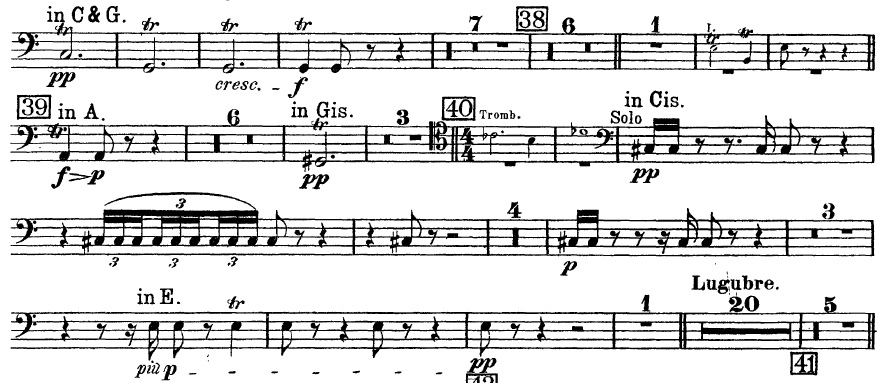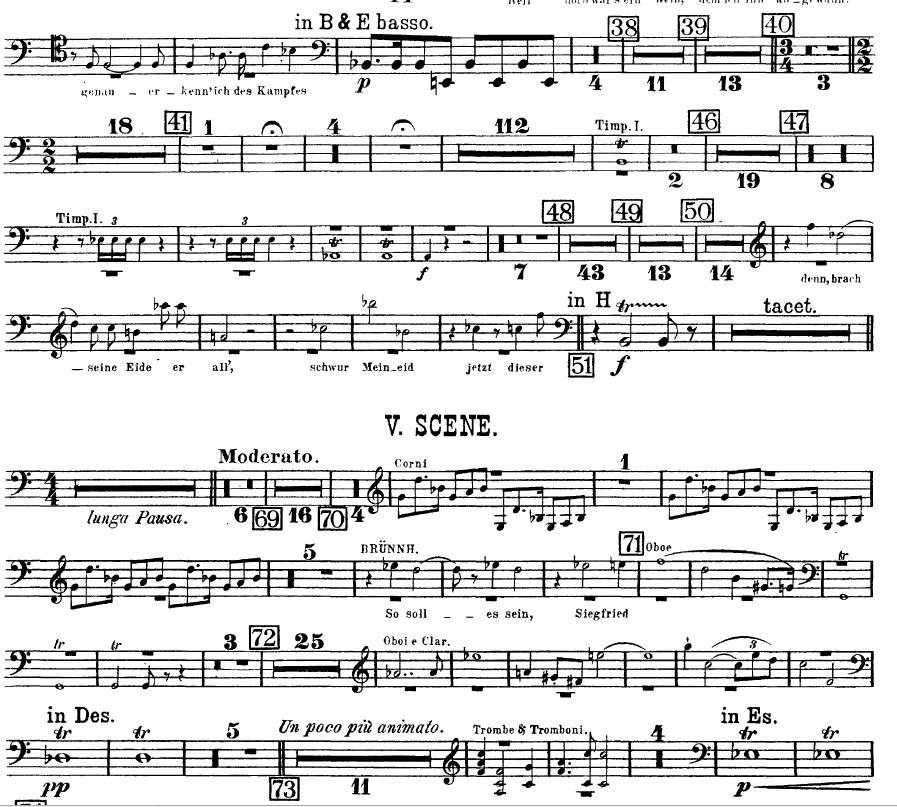Here is the spot in the Timpani 2 in the standard Kalmus (Schott) parts. Unless the player had a mental collapse, it is hard to see how Timpani 2 could have gone wrong in the four measure before Lugubre, unless it had been wrong for many measures before that.

- Wagner TImpani 2A.jpg (138.79 KiB) Viewed 4891 times
Here is the same spot in Trombone 1. Trombone 1 has actually acted as a cue for Timpani 2 at rehearsal 40 and has only 15 measure to count before entering again. Apparently, Trombone 1 along with Trombones 2-4 were all relying on each other and the cue for their entrance instead of counting. But one would think that professionals would be counting in an important performance.

- Wagner Trombone 1.jpg (75.65 KiB) Viewed 4891 times
But when one looks at the Timpani 2 part, it becomes clear that these players cannot rely on the parts at all, which are filled with tacets, long series of multi-measure rests without cues, vocal cues, single chords as cues etc. for their entrances. Instead, they must rely on past knowledge of the piece, reliance on other players, written-in cues etc.

- Wagner Timpani 2B.jpg (291.91 KiB) Viewed 4891 times
So it is no wonder that Timpani 2 and the Trombones could suffer mental collapse when playing from such parts, which illustrate precisely what Arnstein was trying to avoid.
The trumpet parts for the whole Ring are just as bad, which makes the situation described by David also understandable.
An enterprising engraver should set to work creating new, improved parts for the standard operas.